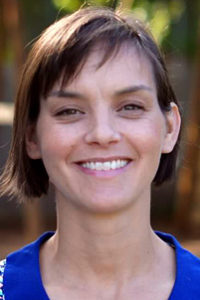
By ALEX BAUMHARDT/Oregon Capital Chronicle
A team of Oregon State University researchers were recently awarded $2.5 million to study the attitudes and feelings coastal residents have about potential offshore wind energy projects.
In August, officials from the Federal Bureau of Ocean Energy Management identified two areas off the Oregon coast near Coos Bay and Brookings that they said would be ideal for generating clean wind energy. The announcement was celebrated by climate groups but raised concerns among some coastal residents and tribal leaders who fear it would disrupt culturally and economically valuable ocean views, marine ecosystems and fishing industries.

“We cannot support offshore wind development until we are provided assurance that it will do good and not harm the tribe, its members and the greater community,” Brad Kneaper, chair of the tribal council of the Confederated Tribes of the Coos, Lower Umpqua and Siuslaw Indians, said in a statement.
With the funding from the U.S. Department of Energy, the Oregon State researchers will survey coastal residents to better understand their attitudes and feelings toward areas with large wind turbines off the coast and what they see as benefits and as concerns. Turbines would be located across about 344 square miles of ocean, 20 or more miles offshore. They could generate enough electricity for 195,000 homes, according to the ocean energy bureau.

“We’re trying to get the perspectives of the people who will be most affected by development, if it occurs, and then we want to go back over time to see if perceptions change,” Hilary Boudet, lead researcher and an associate professor of sociology at Oregon State University, said in a news release.
Another Oregon State sociologist and researcher, Shawn Hazboun, will work with the Affiliated Tribes of Northwest Indians and researchers in Washington and Maine to better understand perceptions of offshore wind energy in other states.
Researchers will also discuss with residents the possibility of mutually beneficial relationships with the companies leasing the wind energy areas. These include companies offering apprenticeship and job training programs for offshore wind sector jobs, helping to pay for community child care, health care or education programs and contributing to environmental projects to help communities combat and adapt to climate change.
The researchers have up to four years to undertake their study, which could occur even as leases for wind energy areas are awarded.
The ocean energy bureau is also soliciting feedback from coastal residents on the two wind energy areas it has identified and that it would plan to lease and recently held public meetings in Coos Bay, Brookings and Gold Beach. People across the state have until Oct. 16 to submit public comments regarding the agency’s potential for leasing the offshore wind energy areas to interested companies.



Let’s hope coastal residents’ attitudes are informed by facts rather than vague concerns and worries. I have yet to hear factual information on how offshore windmills are going to hurt the fishing industry or anything else. And we know from previous reporting that in the Northeast, fishing industry opposition to offshore wind power was quietly funded by the oil industry.